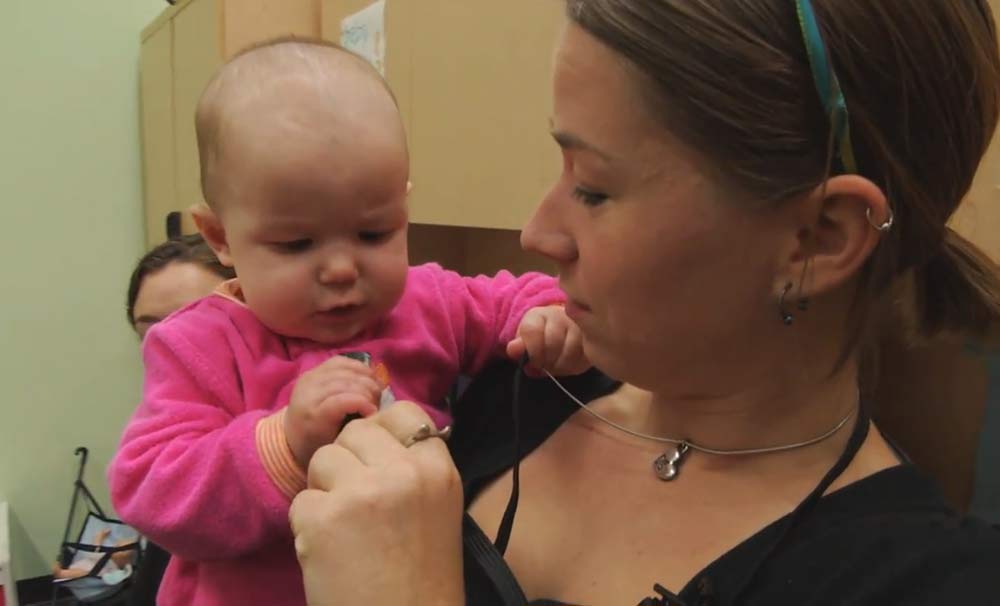Babies Know What's Boring, Study Finds

Babies may be sponges for learning new information, but they are indeed active sponges, with new research showing that babies as young as 7 months are able to parse out the too-complex and downright boring, homing in on situations with just the right amount of "wow, how interesting" learning potential.
The study results, detailed this week online in the open-access journal PLoS ONE, provide evidence for an idea about baby cognition that makes intuitive sense, said lead study author Celeste Kidd, a doctoral candidate in brain and cognitive sciences at the University of Rochester.
The thinking goes that babies organize their search for information in the world in a way that makes the most sense for efficient learning. If a baby looks at something and it seems too simple, suggesting there's not much learning value, he or she won't pay attention to that situation or object, Kidd told LiveScience during a phone interview.
The same seems to play out for stuff that's too complex, which would seemingly hold a trove of learning potential, but which is actually not an efficient use of their brain time. [11 Fun Facts About A Baby's Brain]
Baby's gaze
In the study, Kidd and her colleagues tracked the attention patterns of 72 babies, ages 7 to 8 months, using an eye-tracking device just below a computer screen. As long as the babies stared at the screen, the events being played out continued; but as soon as they looked away, suggesting no more interest, the trial ended. The nonverbal participants quickly realized they were in charge, so if they wanted to continue watching, they just needed to keep their gaze on the screen.
In one of the experiments, the infants watched video animations of items, such as a pacifier or ball, being revealed from behind three colorful boxes. In dozens of trials, the researchers varied when and where the objects would appear on the screen, with the more complex sequences being the least predictable. [Photos of experiment]
Sign up for the Live Science daily newsletter now
Get the world’s most fascinating discoveries delivered straight to your inbox.
(For instance, a shoe may pop out of a pink box 10 times and then a blue box opens and a plane pops out, or the plane might pop up 100 times.)
Inside a baby brain
The researchers used a computer model to figure out which patterns would be too predictable and those that would be way too complex. Essentially, the model acted like the researchers would expect an infant's brain to behave, going into a new situation not knowing a thing, meaning equally expecting an object to pop up behind any of the three boxes; over time, these expectations get updated based on prior observations.
Across two similar experiments, babies consistently lost interest when the video became too predictable, which meant the probability of a subsequent event happening was very high. For instance, if the shoe had popped up 20 times prior, it would be highly likely to pop up again, a subsequent event.
"You would think that the more complex something is, the more interesting it would be. That's not the case with babies," study researcher Richard Aslin of the University of Rochester said in a statement.
The infants' attention and eye gaze, also drifted away when the sequence of events become too surprising, when the pattern seemed unpredictable due to the probability of something happening becoming very low.
So if your little one is getting fussy by the little dance you're doing, change it up and add another move or sound to boost the learning potential.
Follow LiveScience for the latest in science news and discoveries on Twitter @livescience and on Facebook.
Jeanna Bryner is managing editor of Scientific American. Previously she was editor in chief of Live Science and, prior to that, an editor at Scholastic's Science World magazine. Bryner has an English degree from Salisbury University, a master's degree in biogeochemistry and environmental sciences from the University of Maryland and a graduate science journalism degree from New York University. She has worked as a biologist in Florida, where she monitored wetlands and did field surveys for endangered species, including the gorgeous Florida Scrub Jay. She also received an ocean sciences journalism fellowship from the Woods Hole Oceanographic Institution. She is a firm believer that science is for everyone and that just about everything can be viewed through the lens of science.
Why is yawning contagious?
Scientific consensus shows race is a human invention, not biological reality









